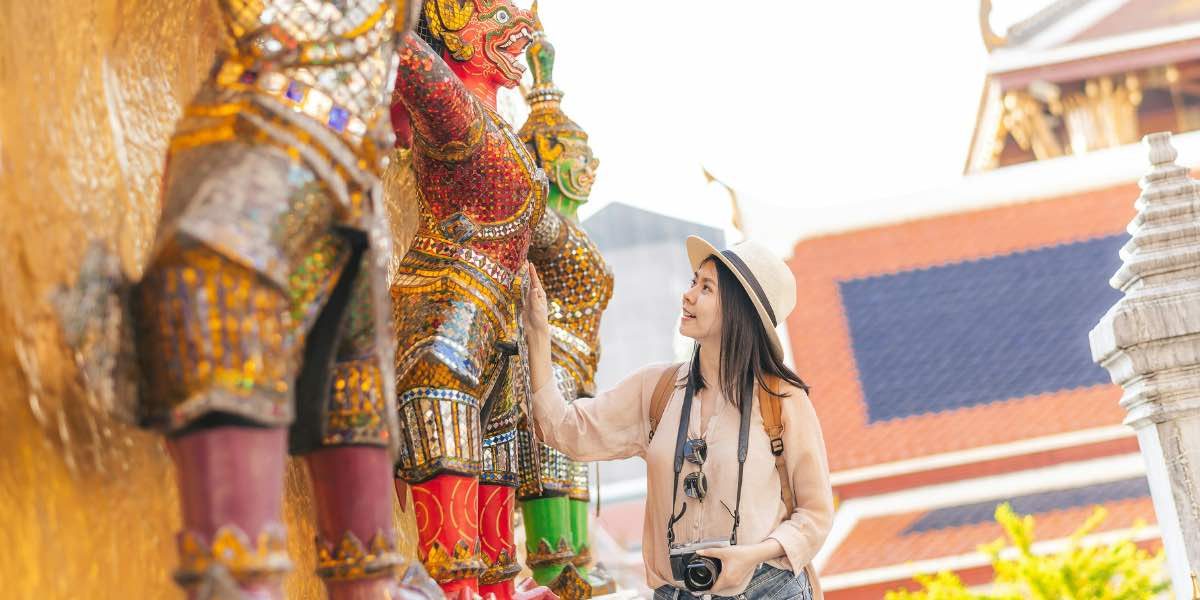The Songkran Water Festival is widely known for its lively water fights, where people use water guns, hoses, and buckets to splash each other in the streets. However, beneath this playful surface, the festival has a rich cultural and spiritual history. Songkran, which marks the Thai New Year, is a celebration deeply connected to Buddhist traditions and family values, focusing on themes of renewal, respect, and reflection. While the water fights are the most recognized aspect of the festival today, they are only one part of a much larger tradition with profound cultural and religious significance.
Songkran takes place annually from April 13 to 15 and is celebrated not just in Thailand, but also in neighboring countries with similar traditions. Despite the festive atmosphere that characterizes the event today, Songkran’s origins are rooted in Buddhist practices that aim to purify, cleanse, and bring blessings for the year ahead. The water fights, while popular, are an outward expression of much deeper cultural and spiritual customs.
Read also: How Much of the World Uses Chopsticks?
Buddhist Influences on the Songkran Festival
At its core, Songkran is closely tied to Buddhism. The name “Songkran” comes from the Sanskrit word meaning “to move” or “to change place,” referring to the movement of the sun into the Aries constellation, marking the start of the new year. Historically, Songkran served as a time for spiritual renewal, where people would engage in activities aimed at purifying themselves and seeking blessings.
Water as a Symbol of Purification
Water plays a significant role in the Songkran Water Festival, both in its religious and cultural contexts. In Buddhist traditions, water symbolizes purification. The act of pouring water over Buddha statues has long been a part of the Songkran celebration, where it is believed that the water can cleanse not just physical dirt, but also remove bad luck and misfortune accumulated over the past year. This ritual is meant to start the new year with a sense of spiritual renewal.
The tradition of pouring water over statues continues today in many temples, where individuals cleanse Buddha images to receive blessings. This practice is often accompanied by prayers for peace, good health, and prosperity in the year ahead. The use of fragrant water in this ritual further enhances the sacred nature of the act, as it is believed to create a peaceful and positive atmosphere.
Respecting Elders and Family Traditions
Songkran is also a time to honor family and elders, which remains a central theme throughout the festival. Traditionally, younger family members visit their elders and perform a respectful act known as Rod Nam Dam Hua, where they gently pour water over the hands of their older relatives. This gesture is intended to seek blessings and show gratitude to those who have imparted wisdom and support throughout the years.
This act of respect is one of the most important social aspects of Songkran, as it helps reinforce family connections and reflects the value of honoring one’s elders. In addition to this ritual, families often come together to celebrate the new year, offering a time for shared meals, bonding, and reflection.
Religious Practices During Songkran
While modern-day Songkran celebrations often focus on fun and play, religious practices remain a key component of the festival. For many Thai people, Songkran is a time for spiritual reflection and merit-making. Throughout the holiday, individuals often engage in activities that align with the teachings of Buddhism, aiming to promote personal growth, generosity, and spiritual well-being.
Merit-Making and Giving Alms
One of the most common merit-making practices during Songkran involves giving alms to monks. This act of charity is seen as a way to earn good karma for the coming year. Monks, who are seen as spiritual guides, often go on alms rounds during Songkran, and people give food or necessities as an offering. In exchange, the monks offer prayers and blessings, fostering a sense of community and spiritual growth.
In addition to giving alms, many individuals also engage in the act of donating to charitable causes, another form of merit-making. These activities are believed to not only benefit the individual but also contribute to the well-being of the broader community. By participating in these practices, people are reminded of the importance of generosity, humility, and gratitude.
The Ritual of Buddha Statue Cleaning
A central spiritual ritual during Songkran is the cleaning of Buddha statues. This practice can be observed in both public temples and private homes. It involves the gentle washing of Buddha images with water and sometimes flowers or fragrances. The act is a form of spiritual renewal, meant to purify the statue and, by extension, the individual performing the act. The water used in this ritual symbolizes the removal of impurities, allowing both the individual and the community to start fresh in the new year.
For many, this ritual serves as a reminder of the impermanence of life and the need to approach the new year with a clear mind and open heart. It also reinforces the idea that spiritual renewal is a process that involves both inner and outer cleansing.
Modern-Day Celebrations and the Water Fights
While the spiritual aspects of Songkran remain a cornerstone of the festival, the modern-day celebrations often focus on the water fights that have become the most widely recognized feature of the event. In major cities, such as Bangkok and Chiang Mai, the streets come alive with water gun battles, dousing water from trucks, and splashing passersby.
The Water Fights: Fun and Unity
The water fights, although playful, still carry the symbolic meaning of cleansing and renewal. In these urban areas, people come together to participate in the festivities, where neighbors, friends, and strangers alike engage in the shared experience of dousing one another in water. The fun of the water fights encourages a sense of unity and shared enjoyment, bringing people together from all walks of life.
In addition to the water battles, other celebrations include street parades, live music, and traditional performances, all of which contribute to the festive atmosphere. Despite the playful nature of these activities, the water fights still represent the underlying theme of purification, where participants symbolically wash away the old year’s burdens.
Regional Differences and Local Traditions
Although the water fights are a popular feature of Songkran, the way the festival is celebrated varies across Thailand. In some regions, the focus remains more on religious observances and family activities than on the street water fights. This diversity in celebration reflects the flexibility of the festival and how it adapts to different local customs and traditions.
Chiang Mai and Northern Thailand
In Chiang Mai, Songkran is celebrated with both traditional ceremonies and modern festivities. The city is known for its processions, where people carry Buddha images, offer prayers, and participate in traditional dances. The sand pagodas built at temples during Songkran are another unique feature in Chiang Mai, where people create small structures from sand as an offering to the Buddha. These sand pagodas are symbolic of the Buddhist practice of merit-making and contribute to the spiritual nature of the celebration.
Ayutthaya and Central Thailand
In Ayutthaya, the former capital of Thailand, Songkran is more focused on spiritual reflection. In addition to the usual temple visits and water offerings, many people participate in ceremonies that include water pouring on Buddha statues and giving alms. These activities emphasize the religious aspects of Songkran and provide an opportunity for individuals to connect with their faith.
Environmental Considerations
As Songkran has grown in popularity, there have been increasing concerns about the environmental impact of the water fights. The use of large amounts of water, plastic water guns, and waste generated from the festivities have raised questions about sustainability. In response, some local communities and authorities have started encouraging more eco-friendly practices during the festival.
Water Conservation and Sustainable Practices
Efforts to reduce the environmental impact of Songkran include promoting the use of recycled water and biodegradable products during the celebrations. In some places, the use of plastic water guns has been discouraged in favor of reusable or environmentally friendly alternatives. These initiatives aim to strike a balance between the fun of the water fights and the need to conserve resources and minimize waste.
Read also: Hidden Gems: Budget-Friendly Tourist Destinations Worth Exploring
A Festival of Renewal, Tradition, and Joy
Songkran is much more than just a water fight. It is a celebration rooted in Buddhist traditions that emphasizes purification, family unity, and spiritual reflection. While the modern-day festivities have incorporated playful water battles and large street parties, the festival’s core message remains one of renewal and connection. Whether through religious rituals, family gatherings, or public celebrations, Songkran provides a time for people to reflect on the past year, embrace new beginnings, and engage in meaningful connections with their communities. As it continues to evolve, the festival remains a vital part of Thailand’s cultural and spiritual fabric.















